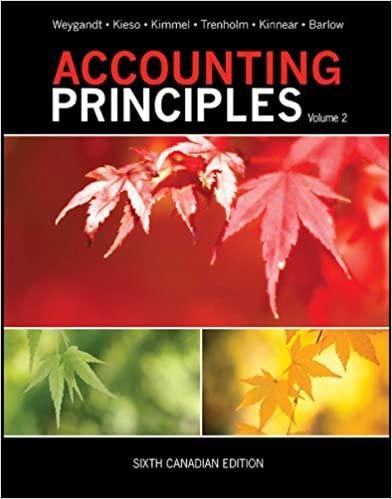Please explain if possible, I need to understand




Entries for Selected Corporate Transactions 784,000 Morrow Enterprises Inc. manufactures bathroom fixtures. The stockholders' equity accounts of Morrow Enterprises Inc., with balances on January 1, 2005, are as follows: Common Stock, $10 stated value (850,000 shares authorized, 560,000 shares issued) $5,600,000 Paid-In Capital in Excess of Stated Value-Common Stock 1,050,000 Retained Earnings 12,710,000 Treasury Stock (56,000 shares, at a cost of $14 per share) The following selected transactions occurred during the year: Jan. 22. Paid cash dividends of $0.13 per share on the common stock. The dividend had been properly recorded when declared on December 1 of the preceding fiscal year for $65,520. Apr. 10. Issued 105,000 shares of common stock for $18 per share. June 6. Sold all of the treasury stock for $952,000. July 5. Declared a 5% stock dividend on common stock, to be capitalized at the market price of the stock, which is $20 per share. Aug. 15. Issued the certificates for the dividend declared on July 5. Nov. 23. Purchased 35,000 shares of treasury stock for $665,000. Dec. 28. Declared a $0.15-per-share dividend on common stock. 31. Closed the two dividends accounts to Retained Earnings Required: 1. The January 1 balances have been entered in T accounts for the stockholders' equity accounts. Record the above transactions in the T accounts and provide the December 31 balance where appropriate Common Stock Jan. 1 Bal. 5,600,000 0 X Apr. 10 Aug. 15 Dec. 31 Bal. Paid-In Capital in excess of Stated Value-Common Stock Jan. 1 Bal. 1,050,000 Dec. 31 Bali Retained Earnings Jan. 1 Bal. 12,710,000 Dec. 31 Bal Treasury Stock Jan. 1 Bal. 784,0001 Dec. 31 Bal Paid-In Capital from Sale of Treasury Stock Stock Dividends Distributable Stock Dividends Cash Dividends 2. Journalize the entries to record the transactions. If an amount box does not require an entry, leave it blank. Jan. 22. Paid cash dividends of $0.13 per share on the common stock. The dividend had been properly recorded when declared on December 1 of the preceding fiscal year for $65,520 Date Account Debit Credit Jan, 22 Apr. 10. Issued 105,000 shares of common stock for $18. Date Account Debit Credit Apr. 10 June 6. Sold all of the treasury stock for $952,000. Date Account Debit Credit June 6 July 5. Declared a 5% stock dividend on common stock, to be capitalized at the market price of the stock, which is $20 per share. Date Account Debit Credit July 5 Aug. 15. Issued the certificates for the dividend declared on July 5. Date Account Debit Credit Aug. 15 Nov. 23. Purchased 35,000 shares of treasury stock for $665,000. Date Account Debit Credit Nov. 23 Dec. 28. Declared a $0.16-per-share dividend on common stock. Date Account Debit Credit Dec. 28 Dec. 31. Closed the two dividends accounts to Retained Earnings. Date Account Debit Credit Dec. 31 3. Prepare a retained earnings statement for the year ended December 31, 20Y5. Assume that Morrow Enterprises Inc. had net income for the year ended December 31, 2015, of $13,218,000. Morrow Enterprises Inc. Retained Earnings Statement For the Year Ended December 31, 2045 Dividends: 4. Prepare the Stockholders' Equity Section of the December 31, 2045, balance sheet. Morrow Enterprises Inc. Stockholders' Equity As of December 31, 2045 Paid-in-Capital: Total Paid-in Capital Total Stockholders' Equity










